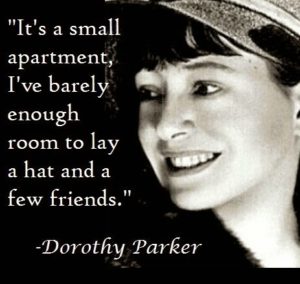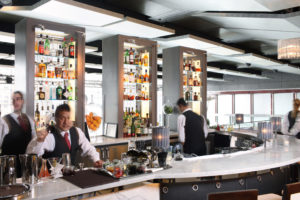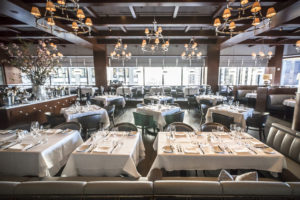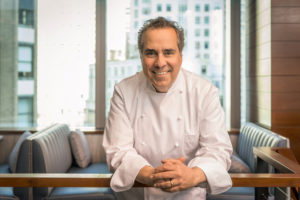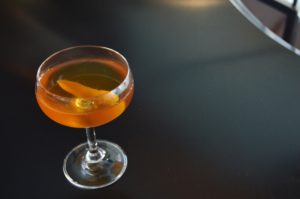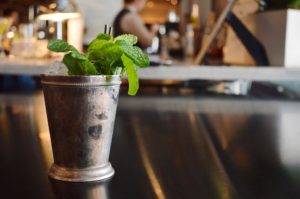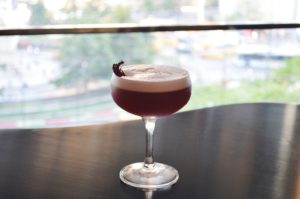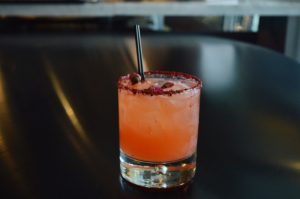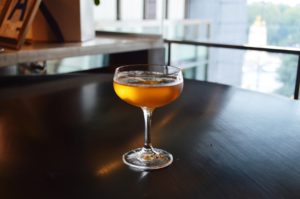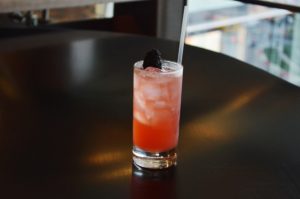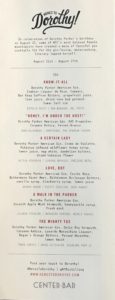A Journey to Open a New Market in 1994 (A True Story)
Ted McDonnell was a top-notch salesperson in the Asia-Pacific/Global Duty-Free division of Seagram Spirits and Wine Group. (SSWG or ‘swig’ as it was referred to.) Ted had spent his career living in Australia, Hong Kong, and Guam as a regional director fixing problems and building brands all over Asia-Pacific.
Then one day an outstanding opportunity came his way in the form of a job with Chivas Brothers. He no sooner got settled in London when he was told that among his first assignments was to go to Vietnam to do sales training on behalf of the brand. President Clinton opened the market to trade and management was anxious to expand opportunities in the emerging market.
His excitement was palpable and, as he waited for his visa, he gathered point of sale and training materials. As he scurried about making preparations—including attending a companywide meeting—he was not able to get his ticket and visa until the last minute. He ended up collecting five boxes of gifts and items that the sales and marketing people could use. You can imagine the effort he put in to get the right stuff and when the week’s wait was over, he ran to his office and collected the visa and plane tickets.
While hoping to stay awake on the flight to see the approach to the country, he instead fell asleep and awoke as the plane landed in a dark and ominous looking airport surrounded by what appeared to be machine gun towers. As he disembarked he felt a bit of relief, when a Vietnamese man tapped him on the shoulder and asked, “Are you an American?”
He quickly said, “Oh no I’m British, I’m here with Chivas Regal Whisky.” The man smiled and said, “Would you please tell your American friends we wish they would come back, we’ve missed them.”
With this surprising start to his journey, he collected the five boxes, breezed through customs, and left the terminal to find his colleagues who were to meet him.
Hello Vietnam
Two problems got his immediate attention. Here he is at the airport of Ho Chi Minh City (formerly Saigon) and it’s basically an open-air cement building—hardly what he expected from the biggest city in the country. Second, there were well over 200 people waiting to greet deplaning passengers but no one was there for him. He waited and worried.
“You need taxi? My name is Tran,” said the young man who approached him. “No, I’m waiting for my friends to pick me up,” was Ted’s reply.
A few hours passed while he stopped people to ask if they knew where the Seagram office was in the city. After a while, Ted noticed Tran hanging around the terminal again. He decided to approach him.
“Tran, bring your car, I think we will go to the city. My friends forgot about me.” So, Tran is very happy, and goes to get his car. As Ted describes it, “The car is a little more than a shoe box and I had a hard time squeezing in with the five boxes, my computer bag and the one piece of luggage I had with me.” But off they went.
Tran is very quiet as they drive along a very dark road without much lights. As they are crossing a bridge, Tran stops the car and says, “I go back and get my friend. I go back and get my friend.” Ted nervously replies, “no, no, no… I’m paying you to take me to the city.” To which Tran says, “Yeah, I know I take you to the city… but first I go back and get my friend.”
The next thing Ted knows, Tran turns the car around and heads back to the airport. Only this time the road is deserted and no cars are on the highway.
Ted starts to get very nervous
“How come there are no other cars… how come I’m the only one on the highway and there is the airport… it’s getting dark…only the lights are on out front of the airport with three men standing there and I’m thinking this is it for me. I’m getting kidnapped, you’re never going to see me again and there’s going to be a letter to my family of some sort… I’m thinking I’ve got to get out of the taxi when we reach the airport. But before I can get my hand on the door this guy jumps in the front seat and smiles and says, ‘Hello Joe. How are you Joe?’ I said, ‘Uh, uh, good’ and we’re driving back toward the bridge.”
Picture this—Ted is stuck in the back street, wedged in among the 5 boxes, computer bag and luggage while Tran and his friend are getting angry and arguing with each other. The friend suddenly reaches into the glove box, turns around and points two things at Ted, one in each hand. He can barely see what it is but is sure it looks like a gun. Ted thinks, “Why the hell did I put myself in this fix?”
After a second or two, Tran’s friend says, “Richard Marx or Air Supply cassette player?” Ted starts laughing and so does Tran and his friend. He puts on Richard Marx and he says, “You sing, you sing for us.” Ted’s thinking, “I don’t sing, but if I don’t I may end up in a ditch so sing your friggin’ heart out.”
Now they’re tooling down the muddy roads and all singing Richard Marx and Air Supply in a bizarre (yet frightening for Ted) karaoke event. After a while, they slow down next to a house, the friend gets out and tells Ted to do the same. Ted protests; Tran’s friend is most insistent and mutters something about needing gas to get to the city.
Ted reluctantly leaves the car and is standing on the side of a dark road with all his gear, dressed in a blazer, gray slacks and white shirt. His fear has just gone up a notch or two.
Ted recollects: “But there, next to the little house were three little kids and an old lady that comes out the front door. She takes my hand and leads me inside, sits me down on a small stool. Now that could only be a small stool because if I stood up I think my head would have gone through the roof.” It turns out to be Tran’s family.
What follows is Vietnamese hospitality as Ted is served tea and some food as he begins to relax a bit. He even starts playing with the children and making duck and animal sounds while he waits for Tran to return. All the while he’s thinking that this is the craziest kidnapping ever.
At long last Tran appears and announces, “Okay we go now.” Ted is relieved and delighted and can’t wait to get to Ho Chi Minh City, a shower, and a comfortable Marriott bed. Goodbyes, smiles and happiness is shared all around. In fact, Ted is so happy, he lightens his load by opening one of the boxes and handing out Chivas Regal shirts.
Welcome to the city
“It’s the city, we’re coming to the city,” Tran joyfully announces.
So again, Ted is getting a little nervous being an American in Vietnam in Ho Chi Minh City. He says, “Tran, ahh what street are we going to?” Tran answers, “I don’t know. I ask the policeman.” Before Ted can object, Tran is out of the car with my paper written in English. The officer looks at Ted and asks, “You Yankee?” he says.
Ted decides that it might be best to claim he’s British and puts on his bad English accent. To which the officer replies, “Ahh too bad … I love baseball, I love the Yankees.” He goes on to inform Ted and Tran that the street they need is too small for the car and they need to take two nearby tricycles. The officer offers to watch the taxi while they head off.
So, they get into the tricycles, with the boxes and other gear, ride down narrow roads, just barely missing other bikes and Ted is thinking what the hell is going on. There are bright neon signs but all are in Vietnamese. Finally, they pull over to a really dark and dingy building and over the doorway it says Marriott Hotel.
Ted is elated but still a bit worried. He goes inside, finds the desk clerk, who fortunately speaks English and asks about Seagram, the colleagues he’s supposed to meet, and Chivas Regal. The man replies no—he has no idea who these people or companies are. Ted says, “I’m looking for the Marriott, maybe it’s a little bigger than this.” To which the desk clerk replies, “Ooh you want the other Marriott.” He writes down the address for Tran in Vietnamese. They collect his stuff and put it in the tricycles, go back through the streets of Ho Chi Minh City and find their taxi and the policeman. Once again Ted opens a box and hands out more t-shirts to the smiling policeman.
Off they go to the address and twenty minutes later they arrive at a decent looking hotel but certainly not a Marriott. It doesn’t take long for him to learn that it’s the wrong place and they need the Marriott by the water. He is assured that it’s close by. Off they go.
As Ted describes it:
“I was happy when he said, ‘Not far from here.’ Okay. We’re so close I can almost taste the Marriott air. It was hot, it was steaming. I was so tired, it was like 24 hours since I last slept. It had to be about 11 o’clock by then. So here I am, we’re back in the car we’re driving to the next place. Nearly half an hour passes—not five minutes—and we finally pull up to another hotel but something didn’t feel right.”
Ted goes in and asks about Seagram, his colleagues, and Chivas and receives no, no, and no in reply. By now he’s questioning his sanity, his belief in God, and thinks that he’s still sleeping on the plane and this is a dream, or worse, a nightmare. And, things get interesting.
He asks the clerk for a phone so he can call one of his colleagues. He gives the man and Tran the number and they look at each other quizzically. They speak animatedly in Vietnamese. Finally, Tran turns to Ted and says, “Your friend is not here.” To which Ted replies, “I know you already told me he’s not here.”
Tran explains further, “No, your friend is in Ho Chi Minh City… in the south.” “Well where am I”, asks Ted.
“You’re in the North, you’re in Hanoi,” he learns from Tran.
Ted, takes out his plane ticket and looks at it. Sure enough, the ticket and documents he grabbed at the last minute say Hanoi, but the phone number is for Ho Chi Minh City, 700 miles away.
Ted asks, “Tran why didn’t you tell me that when you had the paper?”
Tran replies, “I don’t read English.”
“So why did you have the paper, Tran?”
“Because you gave it to me.”
Ted sits down in the lobby, is about to cry but decides he might just as well laugh. Then realizes what he has to do next.
~~~~~~~~~~~~~~~~~~
Join us next time for the continuing saga of Ted McDonnell, Chivas Regal and the trip south to Ho Chi Minh City, aka, Saigon.
By the way, Ted is the CEO of Liberty Lighthouse Group an international alcohol sales and marketing agency. Their mission is to help develop new brands or to further support established brands throughout Asia/Pacific and other Global markets.





